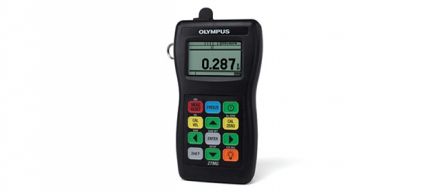Ultrasonic thickness gauging is not just limited to materials at normal (ambient) temperatures. The thickness of a part can be measured even when the surface temperature approaches 900 deg F (500 deg C). In metals particularly there may be circumstances when the thickness of the part needs to be measured during an ongoing process where the test piece cannot be cooled down. Ultrasonic testing has the advantage - just as at normal temperatures - that thickness measurements can be taken from one side of the hot part. Ultrasonics may be the preferred method of measurement even when both sides of the hot metal part are accessible. The reason is that ultrasonic thickness measurements can be made instantly and with very brief contact with the hot surface. For the best calibrated accuracy, the effect of the higher temperature on the velocity of sound must be taken into account. Although change in sound velocity with temperature is much less in metals than in plastics, significant errors in measured thickness can result if sound velocity is not corrected. For measurement of smooth hot metal we recommend the Model 38DL PLUS, or Model 45MG with Single Element software, which can be used with delay line transducers or immersion transducers. On hot surfaces delay line transducers must be used with selected high temperature delay lines. The thickness of hot corroded metal parts or parts with rough surfaces should be measured with a D790 or D791 dual transducer. The 38DL PLUS and , 45MG gages can both be used for this purpose. |
Documentation
Notes d’application
Retour aux ressources
Sorry, this page is not available in your country
Let us know what you're looking for by filling out the form below.



